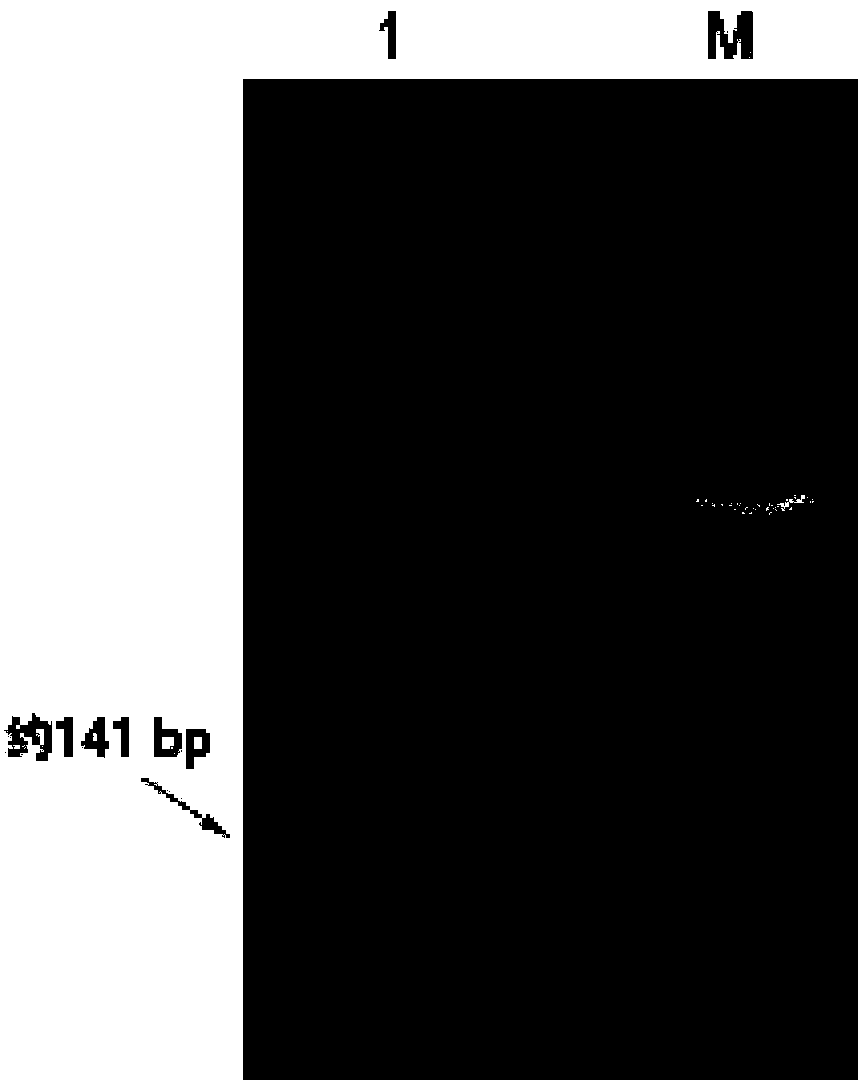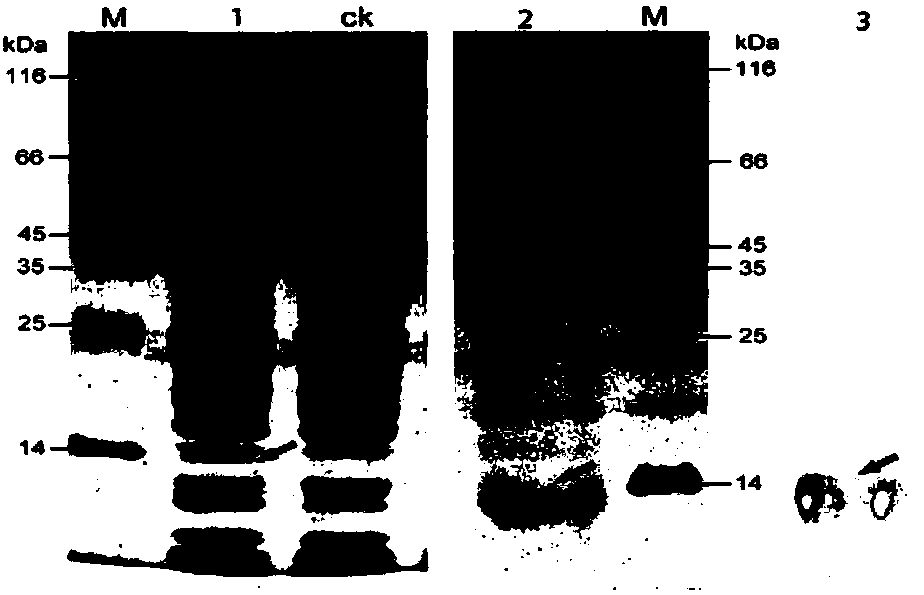Ramie metallothionein gene and recombinant protein and application thereof
A technology of metallothionein and ramie, applied in the field of bioengineering, can solve the problems of limited heavy metal ion binding capacity, large molecular weight, and low cysteine content, and achieve strong binding force, small molecular weight, and high cysteine content Effect
- Summary
- Abstract
- Description
- Claims
- Application Information
AI Technical Summary
Problems solved by technology
Method used
Image
Examples
Embodiment 1
[0039] The ramie metallothionein gene is the nucleotide sequence shown in SEQ ID NO.1 of the sequence table; the ramie metallothionein is the amino acid sequence shown in the sequence table SEQ ID NO.2.
[0040] 1. Synthesize the nucleotide sequence shown in SEQ ID NO.1 in the sequence table
[0041] (1) Extraction of total RNA from ramie root samples
[0042]The total RNA of ramie root samples was extracted according to the RNA extraction kit of Promega Company The instructions for Total RNAKit II (50) were carried out with minor modifications. The plastic utensils used were treated with DEPC (diethylpyrocarbonate) water; the glass utensils were baked at 180°C for 6h; all other reagents were also prepared with DEPC treated water, and sterilized at 121°C for 20min
[0043] ①Take about 100 mg of ramie root samples, wash them with DEPC treated water, put them into a liquid nitrogen pre-cooled mortar, and immediately add liquid nitrogen to grind them into powder;
[0044] ② I...
Embodiment 2
[0070] Tolerance analysis of a ramie metallothionein recombinant transformation engineered strain to cadmium ions
[0071] The escherichia coli engineering strain BL21 that will be transformed into the ramie metallothionein recombinant plasmid is inoculated in LB liquid medium (containing kanamycin 50mg / L) by 1:50 ratio and cultivates; When the absorbance value OD 600At about 0.2, add IPTG with a final concentration of 1mM for induction for 30 minutes, and then add cadmium chloride solutions with a final concentration of 50mg / L, 100mg / L, and 200mg / L, respectively, and culture with shaking at 200rpm at 37°C. Hourly detection of bacterial solution OD 600 value. The control group was the Escherichia coli control strain without the ramie metallothionein gene. Experimental results such as Figure 4 As shown, A is the Escherichia coli control strain (pET-30a / BL21) that has not been transferred to the ramie metallothionein gene, and B is a recombinant strain (pET-30a-bnmtl / BL21) t...
Embodiment 3
[0073] Enrichment effect of a ramie metallothionein recombinant transformation engineering bacteria on cadmium ions
[0074] The Escherichia coli engineering strain BL21 transformed into the ramie metallothionein recombinant plasmid was inoculated into LB liquid medium (containing kanamycin 50mg / L) in a ratio of 1:50 for cultivation; when OD 600 When the value is 0.2, add IPTG with a final concentration of 1mM for induction for 30 minutes, then add a cadmium chloride solution with a final concentration of 100mg / L, and collect the bacteria after shaking at 37°C and 200rpm for 6 hours; take 0.1g of the bacteria and add Put it into a ceramic crucible, heat it in a muffle furnace at 500°C for 8 hours, and then add 5ml of nitric acid / chloric acid mixture (HNO 3 :HClO 4 =3:4); reheating (100° C.) until no carbon residue is visible, add 10ml concentration of 8.3% saline solution to dissolve the residue, and use flame atomic absorption spectrometry to measure the cadmium ion content ...
PUM
| Property | Measurement | Unit |
|---|---|---|
| Molecular weight | aaaaa | aaaaa |
Abstract
Description
Claims
Application Information
 Login to View More
Login to View More - R&D Engineer
- R&D Manager
- IP Professional
- Industry Leading Data Capabilities
- Powerful AI technology
- Patent DNA Extraction
Browse by: Latest US Patents, China's latest patents, Technical Efficacy Thesaurus, Application Domain, Technology Topic, Popular Technical Reports.
© 2024 PatSnap. All rights reserved.Legal|Privacy policy|Modern Slavery Act Transparency Statement|Sitemap|About US| Contact US: help@patsnap.com










